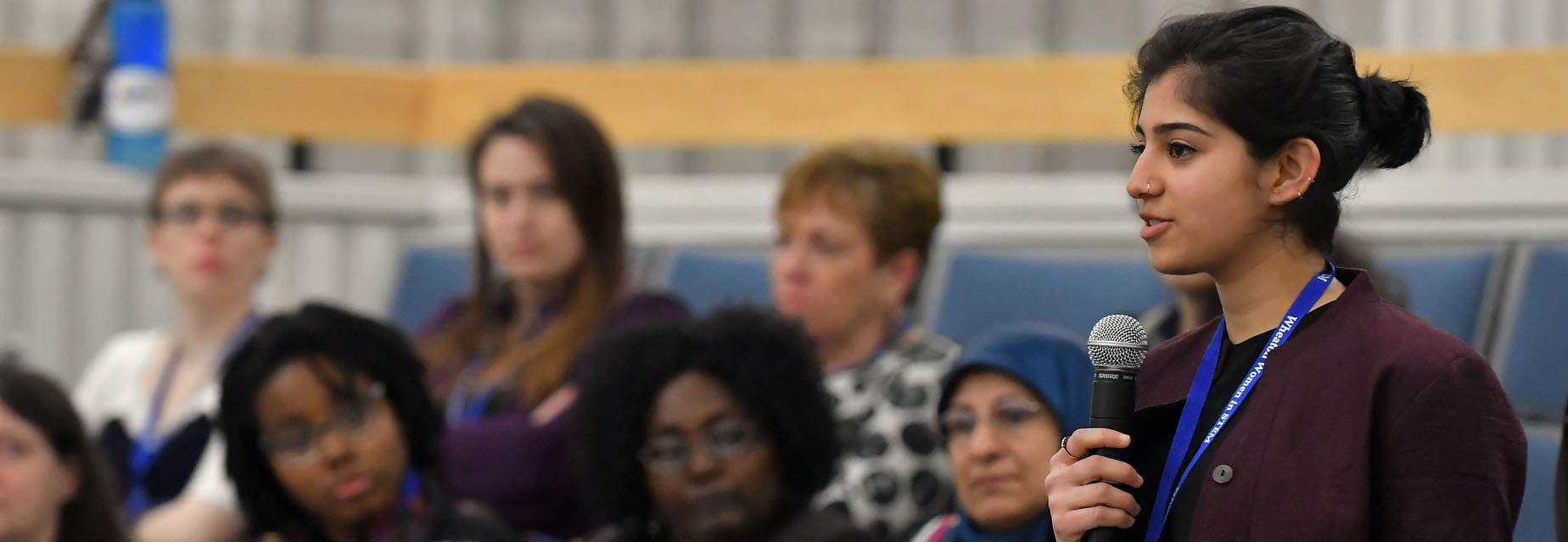Belong. Connect. Create. Pass it on.
The information on this page is from our 2019 event.
On this page
2019 Schedule
Saturday, April 6, 2019
8:00 a.m. Registration and Breakfast
Diana Davis Spencer ’60 Cafe, Mars Science Center
9:00 a.m. Welcome
Hindle Auditorium
President Dennis Hanno, Wheaton College
Rachelle DeCoste, Associate Professor of Mathematics, Wheaton College
Laura Ekstrom, Assistant Professor of Biology and Neuroscience, Wheaton College
9:15 a.m. Plenary Address: Building Community
Hindle Auditorium
Susan Windham-Bannister, President of AWIS
9:45 a.m. Panel Discussion: Creating Your Community
Hindle Auditorium
Panel Moderator:
Susan Windham-Bannister
Panelists:
Felicia Jadczak, Co-CEO and Co-Founder of She+ Geeks Out
Stella Kafka, Executive Director of American Association of Variable Star Observers
Adriana Salerno, Associate Professor of Mathematics, Bates College
10:30 a.m. Coffee Break
Hindle Lobby & Filene Center
10:50 a.m. Community Trailblazers
Hindle Auditorium
Julie Ballo, University of Massachusetts Lowell, Outreach Coordinator for eNable
Sarah McAnulty, Founder of “Skype a Scientist,” University of Connecticut
Prasha Sarwate, Founder, Host of Her STEM Story; Quality Manager, Prysmian Group
Kathleen K. Schwind, Undergraduate Community Activist, MIT
11:40 p.m. Community Breakout Sessions
Sharing Stories: Sarah McAnulty & Prasha Sarwate
SC 234
Societies as Community: Felicia Jadczak & Stella Kafka
SC 246
Undergraduates Making a Difference: eNable & Kathleen K. Schwind
Hindle Auditorium
Virtual Communities: Adriana Salerno & Aliyah Weinstein
SC 243
12:15 p.m. Group Photo
Wallace Library Steps (Rain Location: Filene Center)
12:30 p.m. Lunch
Emerson Dining Hall
1:40 p.m. Student Research Talks
Follow the link above for titles and locations.
2:30 p.m. Professional Development Workshops
To STEM and Beyond! Beginning and Persisting in Your Career. Alnylam
SC 1343
Birth Your Leadership Portrait; Start with Knowing What’s Inside. Suzanne I. Cross, ’81, co-founder of Szywalk LLC.
SC 234
Communicating Science Through Stories. NOVA
SC 1314
Graduate Faculty Panel
SC 243
Jacob Barandes, Lecturer of Physics and Director of Graduate Studies, Harvard University
Randall Hughes, Associate Professor of Marine Science, Northeastern University
Saeja Kim, Professor of Mathematics Department (Chair) & Professor of Data Science, University of Massachusetts Dartmouth
Jacquelyn Schell, Assistant Professor of Molecular Pharmacology, Physiology and Biotechnology, Brown University
3:15 p.m. Networking Session
Diana Davis Spencer ’60 Cafe, Mars Science Center
4:00 p.m. Presentation of Wheaton’s Woman in STEM Award and Keynote Address
Hindle Auditorium
Paula A. Johnson, President of Wellesley College
2019 Sessions
Creating Your Community
Opening remarks by Susan Windham-Bannister, President of the National Board of Directors for the Association for Women in Science (AWIS), will be followed by a panel discussion. The panel will include women who have experience building community in various ways- through business endeavors, education and inclusion, and a society involving anyone with an interest in the broader STEM community.
Panelists
Felicia Jadczak, Co-CEO and Co-Founder of She+ Geeks Out
Stella Kafka, Executive Director of American Association of Variable Star Observers
Adriana Salerno, Associate Professor of Mathematics, Bates College
Aliyah Weinstein, Chief Brand Officer, Letters to a Pre-Scientist; Marketing and Communications Manager, Addgene
Community Trailblazers
Four amazing young women will share their accomplishments through short talks focused on their experiences founding or participating in outreach efforts. These community trailblazers cover a broad range of interests from 3D printed prosthetics to podcasts, science communication and outreach via Skype, and the relationship between STEM, education and international relations.
Speakers
Julie Ballo, University of Massachusetts Lowell, Outreach Coordinator for eNable
Sarah McAnulty, Founder of “Skype a Scientist,” University of Connecticut
Prasha Sarwate, Founder, Host of Her STEM Story; Quality Manager, Prysmian Group
Kathleen K. Schwind, Undergraduate Community Activist, MIT
Breakout Sessions
No doubt you will want to follow up on conversations from the morning’s panel and flash talks. During this informal breakout session, you will have the opportunity to talk with the panelists and trailblazers in smaller groups. There are no presentations here. Just choose a session and engage in conversation with our speakers and your peers!
Concurrent Sessions:
Virtual Communities
Undergraduates Making a Difference
Societies as Community
Sharing the Stories of Science
Student Research Talks
Choose from among a variety of topics and support undergraduates delivering short research talks in several concurrent sessions. See the 2019 schedule of Student Research Talks.
Professional Development Workshops: Concurrent Sessions
Birth Your Leadership Portrait; Start with Knowing What’s Inside
Knowing and controlling how you are perceived or “show up” to others is a cornerstone of iconic leadership. This workshop will invite you to view yourself, relate differently, and ultimately paint your leadership portrait on the minds of those you choose to lead. These tools translate into both STEM and non-STEM leadership.
Suzanne Cross, co-founder of Szywalk LLC
Communicating Science through Stories
The tools of effective science communication are already in your hands, from livestreams to short-form videos to Instagram essays. In this workshop, digital media producers from NOVA, the PBS science documentary series produced at WGBH in Boston, will share cases studies and best practices for how to take full advantage of these platforms by using storytelling to connect your digital audience to the science happening in the world around them.
Ralph Bouquet, Director of Education and Outreach, NOVA PBS
Ana Aceves, Digital Associate Producer, NOVA PBS
Lorena Lyon, Broadcast Research Intern, NOVA PBS and Research Assistant, Harvard Medical School
Graduate Faculty Panel
Interact with a diverse group of graduate school faculty. Ask questions about graduate admissions, graduate funding (tuition and/or stipends), the daily life of graduate students, post-graduate school careers, and any other topics about which you are curious.
Jacob Barandes, Lecturer and Director of Graduate Studies in Physics, Harvard University
Randall Hughes, Associate Professor of Marine Science, Northeastern University
Saeja Kim, Professor of Mathematics (Chair) and Professor of Data Science, University of Massachusetts Dartmouth
Jacquelyn Schell, Assistant Professor of Molecular Pharmacology, Physiology and Biotechnology, Brown University
Presenting yourself as a Scientist
In this session, diverse teams of Alnylam employees will partner in small groups with Summit attendees with the primary goal of sharing important elements for presenting oneself as a scientist and fantastic candidate to potential employers. The group facilitators will share their personal career development stories and lessons learned. Through discussion and Q&A, they also will convey their perspectives as hiring managers in various STEM disciplines. Through these conversations, the participants will also gain a sense of the diverse opportunities that exist in industry for women in STEM.
Al Boyle and a team of scientists from Alnylam
Networking Session
Spend some time talking with faculty from graduate programs, scientists from local businesses, and one another. This is the time to interact with professional and student scientists on a one-on-one basis- ask questions about the daily life of a scientist and form deeper relationships with peers and role models.
Keynote Talk
End the day by being inspired by Dr. Paula A. Johnson, MD, MPH, President of Wellesley College. Dr. Johnson has had an impressive career advocating for women’s health from her time as a professor of medicine through her leadership in various roles in the fields of health, education, and research.
Speakers
Plenary Speaker: The Importance of Community
Dr. Sue Windham-Bannister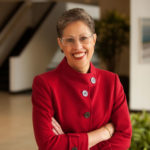
Dr. Susan Windham-Bannister is a nationally and internationally recognized expert in biopharma innovation, market access and market optimization strategies. She has been recognized by the Boston Globe as one of the “10 Most Influential Women in Biotech,” by Boston Magazine as one of the “50 Most Powerful Women in Boston” and is the incoming President of the National Board of Directors of the Association for Women in Science (AWIS). Dr. Windham-Bannister President and CEO of Biomedical Growth Strategies, LLC.
From 2008-2015 Dr. Windham-Bannister served as President and CEO of the Massachusetts Life Sciences Center (MLSC), an independent authority charged with administering a $1-billion Life Sciences investment fund created by Governor Deval Patrick. She is the first African American in the U.S. to lead a life sciences-focused innovation fund of this scale. The MLSC invests to catalyze innovation in all sectors of the Massachusetts life sciences community – biotechnology, pharmaceuticals, medical devices, medical diagnostics and bioinformatics/analytics. Since completing her tenure as President and CEO of the Massachusetts Life Sciences Initiative, Dr. Windham-Bannister has been an advisor to other city, state and regional life sciences initiatives in the U.S. and abroad.
Dr. Windham-Bannister received a B.A. from Wellesley College, a Doctorate in Health Policy and Management from the Florence Heller School at Brandeis University, and a Doctor of Science from Worcester Polytechnic Institute (honoris causa). She completed her doctoral work at the Heller School under a fellowship from the Ford Foundation and was also a post-doctoral fellow at Harvard University’s John F. Kennedy School. Dr. Windham-Bannister also served as a Fellow in the Center for Science and Policy (CSAP) at Cambridge University, Cambridge, England.
Community Panelists
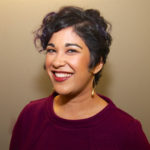
Felicia is Co-CEO and Co-Founder of She+ Geeks Out. Felicia Jadczak is a recognized voice in the diversity and inclusion field. She worked in the technology industry for over ten years, specializing in the creation and development of innovative programs and solutions. She has extensive experience in providing strategic guidance for diversity and inclusion across cross-functional teams.In 2016 she pivoted to focus solely on She+ Geeks Out. Felicia runs sales and business development, is the lead diversity and inclusion facilitator, and works closely with Co-CEO Rachel Murray on strategy and corporate programming on diversity, equity and inclusion.
Felicia received a BA in Comparative Literature (French, English) from Haverford College. She holds an MBA and a Masters in Information Systems from the Questrom School of Business at Boston University and is also the recipient of Georgetown University’s Certificate in Strategic Diversity and Inclusion Management. Felicia is the product of an entrepreneurial family and continues that tradition with her work on She+ Geeks Out. Felicia loves street art, fitness and wellness, wine and french fries.
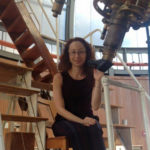
Dr. Stella Kafka, is the Director of the AAVSO (American Association of Variable Star Observers). Before her tenure at the AAVSO, Dr Kafka held positions at CTIO, Spitzer Science center/Caltech, Carnegie Institution of Washington/DTM and AIP Publishing. The AAVSO is an international non-profit organization of variable star observers whose mission is to enable anyone, anywhere, to participate in scientific discovery through variable star astronomy.
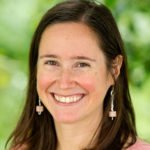
Adriana Salerno is originally from Caracas, Venezuela, where she received her undergraduate degree in mathematics from the Universidad Simon Bolivar in 2001. She then went on to earn her PhD at the University of Texas. While completing her doctorate in mathematics, Salerno was also selected as the AMS-AAAS Mass Media Fellow in the summer of 2007; as such, she wrote articles for the Voice of America. Salerno’s main research area is Number Theory, in particular the intersections of number theory with geometry, physics, and cryptography. She is also very interested in the communication and teaching of mathematics to create a more inclusive and equitable STEM workforce. She is an alum of the Linton-Poodry SACNAS Summer Leadership Institute, and the SACNAS-HHMI Advanced Leadership Institute, and is committed to increasing the representation of minorities and women in the mathematical sciences. She is a proud member of AWM, SACNAS, MAA, and AMS. Salerno was visiting mathematician at the Mathematical Association of America’s headquarters in Washington, D.C., from September to November 2016.
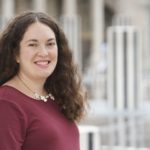
Dr. Aliyah M. Weinstein has 5+ years of experience as a science writer, where her expertise lies in writing career development and marketing content for the life sciences sector. She currently works at Addgene, the nonprofit plasmid repository located in Watertown, MA, as the Marketing & Communications Manager. She also works as the Chief Brand Officer of the science education nonprofit Letters to a Pre-Scientist, which connects middle school students living in high-poverty communities with real scientists as pen pals. Aliyah was shortlisted for the 2018 Nature Research Innovating Science Award for her efforts in supporting girls to explore STEM, and was part of an international cohort invited to learn science outreach strategies from Universcience in Paris, France during the Week of International Scientific Young Talents in 2017.
Aliyah worked in scientific research for over 8 years, and earned a PhD in cancer immunology from the University of Pittsburgh in 2018. She was awarded a Chateaubriand Fellowship from the Embassy of France in the United States to perform a portion of her dissertation research in Paris. Her undergraduate degree, in Molecular Biology & Biochemistry and French literature, is from Rutgers University.
In her spare time, Aliyah is an avid traveler, having visited 43 U.S. states and 16 countries. She’s a yogi and a foodie and can be found exploring both of those scenes in any new place she visits.
Community Trailblazers
Julie Ballo, UMass Lowell, Outreach Coordinator for eNable
Julie Ballo, undergraduate at UMass Lowell, Outreach Coordinator for eNable: a student run, volunteer organization that creates and provides 3D printed prosthetics/devices for all kinds of needs, not just limb differences.

Prasha Sarwate Dutra received her B.Tech in a Chemical Engg from University of Pune and her M.Sc in Mechanical Engg from UT ARLINGTON, Texas. She moved to the US in 2012 from India and has been working in manufacturing since 2014.
Prasha is Brave, Creative and Authentic! She believes that Women in STEM can and will change the world. She’s passionate about creating a positive change that can inspire next generation on women engineers. She founded HER STEM STORY, a podcast, community and a platform to bridge the voice gap in STEM fields. The show is an interview format where Prasha interviews women from around the world and shares their struggles, victories, and their love for STEM. In just 12 months, she has interviewed over 50 women and released 38 episodes. She has 5000plus community on social media and has been featured in books like the Super Cool Scientists and many other SciComm platforms.
She also serves as the Project Manager at STEM Advocacy Institute, A Boston Based Non-Profit that’s working to support SciComm and diversity work in STEM fields.
She’s currently the Quality Manager at the Prysmian Group’s RI plant, the company is world’s largest wire and cable manufacturers. She’s passionate about finding creative ways to solve problems.
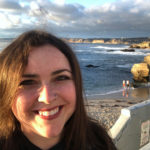
Sarah McAnulty is a Ph.D. candidate at the University of Connecticut studying Hawaiian bobtail squid and their symbiosis with bioluminescent bacteria. In addition to her symbiosis work, Sarah is the founder of the science communication program Skype a Scientist, and is highly active in the Science Communication community.
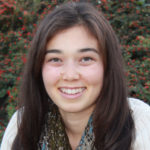
Kathleen Schwind is pursuing a Bachelor of Science in Environmental Policy/Dispute Resolution and a Master in City Planning in MIT’s Department of Urban Studies and Planning (DUSP). She is a 2015 Coca Cola Foundation Scholar, 2015 Washington Crossing Foundation Scholar, an MIT Burchard Scholar and a Fung Scholar. She is the president of the MIT Student Alumni Association, and secretary of the MIT Undergraduate Association Financial Committee.
Kathleen’s passion lay in the overlap between STEM (Science, Technology, Engineering, Math) and education, and STEM and international relations. For the past 9 years she has been creating learning opportunities that transcend language, physical ability, and cultural barriers for young people. She founded the LMUSD Gifted and Talented Education (GATE) Olympics in 2008 and has since been the Director of this bilingual, multi-county, academic challenge designed to engage and inspire elementary school students. During the summer of 2017, she brought the event to a school located in El Salvador’s least educated region and worked with the staff and students to create new STEM related opportunities. As Founder and Coordinator for both the Northeast Regional and California Central Coast Regional Middle School Science Bowls, Kathleen inspires middle school students on both coasts to pursue STEM education and careers.
Kathleen also has a passion for negotiation and leadership, and how this is displayed in the defense sector and on the international level. She held the first program management internship at BAE’s FAST Labs in Burlington, MA in summer 2018 and is interested in the future of Artificial Intelligence regulation internationally. She combines the interest of the technical fields with her love of negotiation. She was a teaching assistant in the Entrepreneurial Negotiations Course for Mid-Career Executives offered by MIT’s Professional Education and for MIT’s popular undergraduate course titled “The Art and Science of Negotiation.” During the summer of 2016 Kathleen held an internship at the Singapore University of Technology and Design, working with the Lee Kuan Yew Center for Innovative Cities on the Living with Technology Project. She was further inspired to pursue studies in international relations while attending and presenting research with the MIT Special Interest Group in Urban Settlement (SIGUS) at Habitat III, the United Nations Conference on Housing and Sustainable Urban Development in Quito, Ecuador (October 2016) and the World Urban Forum in Kuala Lumpur, Malaysia (February 2018). Kathleen is the only undergraduate who authored excerpts on conflict resolution and natural resource management for the MIT Environmental Problem Solving book published by London’s Anthem Press.
Kathleen also enjoys public speaking, and has served on a number of leadership boards both in California and at MIT. She works on the Margaret MacVicar Memorial AMITA Women’s Oral History Project, in which she interviews MIT alumnae to collect and document their stories for MIT’s official archive. She will be attending the University of Cambridge to pursue an MPhil in International Relations and Politics and then hopes to attend law and/or business school. Eventually, she plans to work in foreign policy, perhaps for the State Department, the United Nations, or the White House. In her free time, Kathleen loves to travel, sail, spend time doing other outdoorsy things, and spend time with her family.
Student Research Talks
Talks by student researchers like you! The list of talks with abstracts can be found here.
Professional Development Workshops
Learn tricks of the trades, how to present your best self, and how to effectively communicate your science with small group interactions with representatives from Alnylam, NOVA/PBS, and Johnson & Johnson in our Professional Development Workshops.
Make meaningful connections with representatives from graduate schools, non-profits, and STEM industry representatives throughout the NorthEast.
Communicating Science through Stories
Ralph Bouquet is the Director of Education and Outreach for NOVA, the PBS science documentary series produced by WGBH in Boston. At NOVA, Ralph’s team supports science educators through the creation of free classroom resources and finds creative ways to engage new audiences for NOVA’s broadcast and digital productions through science communication events and programs around the country. Before NOVA, Ralph taught high school biology and chemistry in Philadelphia and then spent some time in ed-tech at a Boston-based startup. Ralph received his B.A. from Harvard University, and studied secondary science methods and urban education while completing his M.Ed. at UPenn.
Ana Aceves is currently a Digital Associate Producer at NOVA PBS. There, she works on all things digital—from producing videos and curating content for NOVA’s various social media platforms to managing its website. She enjoys telling stories at the intersection of science and everyday experiences, especially when they empower women, people of color, and other underrepresented groups in STEM. Aceves earned her Bachelors’ Degree in astrophysics and media studies from UC Berkeley and then went on to pursue a Masters’ in Science Journalism from Boston University. When she’s not working, she’s either at the gym, watching shows on Netflix, baking, or salsa dancing.
Lorena Lyon is a recent graduate of Harvard College with a degree in Human Developmental and Regenerative Biology. During undergrad, she conducted research in synthetic biology, engineering bacteria to degrade plastic with the Harvard iGEM team at the Wyss Institute for Biologically Inspired Engineering. Lorena is currently a research assistant at Harvard Medical School in the Silver Lab where she is investigating the use of genetically engineered bacteria as diagnostic tools. She is also a broadcast research intern at NOVA, where she provides production assistance, research, and fact checking for NOVA’s broadcast films. Lorena plans to use her research background and interest in writing and multimedia to pursue a career in science journalism.
Graduate Faculty Panel
Jacob Barandes, Lecturer of Physics and Director of Graduate Studies, Harvard University
Randall Hughes, Associate Professor of Marine Science, Northeastern University
Saeja Kim, Professor of Mathematics Department (Chair) and Professor of Data Science, University of Massachusetts Dartmouth
Jacquelyn Schell, Assistant Professor of Molecular Pharmacology, Physiology and Biotechnology, Brown University
Presenting yourself as a Scientist
Alnylam is leading the translation of the Nobel Peace Prize-winning discovery of RNA interference (RNAi) into a whole new class of innovative medicines. We’re motivated in this endeavor by the bravery and perseverance of people with unmet medical needs who live with rare and genetic diseases. They are the focus of our efforts, and we exist as a company because of them. We are committed to building an environment where employees are enabled to achieve their full potential. By empowering employees to bring their unique differences to work, our business grows stronger with advanced and original thinking, allowing us to bring groundbreaking medicines to patients.
Birth Your Leadership Portrait; Start with Knowing What’s Inside
Suzanne I. Cross, co-founder of Szywalk, LLC. Inno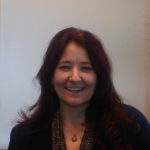
As President of the Point of Care Industry Consortium, comprised of members from over 30 competitors, she created a nonprofit company, secured funding and led the effort to create a universal software interface that unshackled the fledgling Point of Care Diagnostics industry. While serving in J&J Corporate Development team, including VP of Business Development, she focused on business acceleration and incubation for new J&J growth platforms by creating strategy and supporting equity investments and internal ventures in adjacent and “white spaces” for J&J across healthcare (e.g. Ophthalmology, Healthcare IT, Advanced Diagnostics and Neuromodulation) that resulted in $80MM equity capital investment. She also led the Transparency and Coordination work-stream to transform the vision of J&J Innovation into the reality of four geographical Innovation centers in Cambridge, San Francisco, London and China. This highly successful, now cross-sector initiative’s purpose was to accelerate J&J’s ability to access early stage innovations through creative partnerships and collaborations. In her final J&J role, as Vice President Business Development, Global Head of Consumer Business Development Operations and Alliance Management she drove due diligence, integration and alliance management process excellence/best practices for the Consumer M&A function with over $3bn in transactions.
Most recently, Suzanne serves an Advisory Board role to a rapidly growing packaging company, is a member of the Wheaton College (Norton, MA) President’s Commission and is providing management consulting services as a Co-founder of SzyWalk LLC.
Suzanne graduated Summa Cum Laude with an undergraduate Biology degree from Wheaton College, Norton, MA where she was elected to Phi Beta Kappa and holds an MBA degree from the Krannert School of
Keynote Address/Wheaton Woman in STEM 2019

President Paula A. Johnson is a highly respected and passionate leader, deeply committed to women and to sustainably improving their lives. She is recognized internationally as an innovator who has brought her broad range of experience as a researcher, educator, and expert in health care, public health, and health policy to bear in the effort to advance the well-being of women. With a remarkable track record of accomplishments—she founded the Connors Center for Women’s Health and Gender Biology at Brigham and Women’s Hospital—she has led in the field of women’s health, taking an approach to biology that integrates insights from sociology, economics, and many other fields.
Johnson was the Grayce A. Young Family Professor of Medicine in Women’s Health at Harvard Medical School, as well as professor of epidemiology at the Harvard T.H. Chan School of Public Health. Her research, her vision, and her interdisciplinary approach to leading at the intersection of health care, education, and public health have placed her in key leadership roles in organizations around the world.
2019 Student Research Talks
Student Research Talks 1:40 – 2:25
On this page
Click topic links to view details
Astronomy/Mathematics: SC 1343
1:40 – The Prevalence of O IV and S IV Density Diagnostics in UV Burst Spectra
1:55 – Encryption using the Rubik’s Cube
2:10 – Using Eclipse to Probe Physical Conditions Along the Jets in the X-Ray Binary SS 433
Biology: MARS SC 1141
1:40 – How Do Bacterial Communities Cycle Nutrients?
1:55 – The relationship of the gut microbiome, environmental exposures, and neurocognitive development in infants and children
2:10 – Developmental mechanisms of life history trade-offs: varying JH titers lead to distinct PG activity in Manduca and Drosophila
Biology: MARS SC 1143
1:40 – Investigation of the Imprinted miRNA Cluster miR-379/410 and its Function in Neurons
1:55 – Fighting Fibrosis: Modeling the Role of EMT in Airway Lung Diseases
2:10 – The role of nitrification and nitrate and oxygen diffusion in enhancing dissimilatory nitrate reduction to ammonium in agricultural soils
Biology/STEM Education: MARS SC 1145
1:40 – Science Learning and Mentoring in Framingham Public Schools
1:55 – Documenting the Presence of Breeding Grassland Birds in SE Massachusetts
2:10 – Exploring the Biophysical Properties of Bacterial Predator Bdellovibrio bacteriovorus
Biology/BioInformatics/Computer Science: SC 234
1:40 – Computer-based modelling of substituted pyrrole interaction with horseradish peroxidase heme
1:55 – Rigid Structure Origami Printing
2:10 – Computational Phylogenetics: Experimental Evaluation of Phylogenetic Rooting Techniques
Chemistry: MARS SC 2143
1:40 – Chronic Exposure to Methylmercury Adversely Affects Response to Oxidative Stress
1:55 – Structural modification of a natural angiotensin converting enzyme inhibitor and the effect on activity
Engineering/Mathematics: SC 1314
1:40 – Near Earth Asteroid Visualization
1:55 – Spinal Cord Injury Recovery
2:10 – Hidden Markov Model in Music Classification
Mathematics: SC 1315
1:40 – Gerrymandering: A Comparison of Two Measures of Compactness
1:55 – A Mathematical Model for Tumor–Immune Dynamics in Multiple Myeloma
Neuroscience: MARS SC 2145
1:40 – Characterization of cannabinoid analog and cannabidiol induced physiological effects on the embryonic development of Danio rerio
1:55 – TBI Diagnostic and Recovery Method Using Miniature EEG
2:10 – Target Drug Delivery Across the Blood Brain Barrier using Vitamin B12
Neuroscience: MARS SC 2147
1:40 – The Comorbidities and Risk Factors of Female Genital Cutting in Women from 15 African Countries
1:55 – From the Self to the Other: A Study of Psychological Data Behind Developed Empathy and Collective Action
2:10 – A Rhino Sheds Its Horns Like Deer Shed Antlers: Understanding Differences Between US and Chinese Citizens in Beliefs of Wildlife Trafficking
Astronomy/Mathematics: SC 1343
Moderator: Tommy Ratliff, Wheaton College
1:40 – The Prevalence of O IV and S IV Density Diagnostics in UV Burst Spectra
Amanda Bacon, Bennington College
Though the Sun is the nearest star to us, there are still mechanisms that we do not understand, one being the increase in temperature from the surface (~5600K) to the corona (1 million degrees). We can use UV bursts to take a chip out of this problem. UV bursts appear as small-scale (~700km), short-lived (~10s of minutes) brightenings observed in regions on the Sun with active magnetic fields. Improving our understanding of these bursts will give us insight into how they contribute to the heating of the local and global solar atmosphere.
1:55 – Encryption Using the Rubik’s Cube
Weiqi Feng, Wheaton College
Rubik’s cubes, estimated to be the world’s besting-selling toy, is a fascinating puzzle that I believe most people have attempted to solve. However, as anyone who has tried knows, Rubik’s cubes are hard to solve. Cryptography shares the essence with playing Rubik’s cubes, to fix the scrambled pattern. In this talk, we will discuss the advantages and challenges of using the Rubik’s cube as the basis of an encryption system. We will also see additional opportunities provided by using 4 by 4 by 4 and larger cubes.
2:10 – Using Eclipse to Probe Physical Conditions Along the Jets in the X-Ray Binary SS 433
Xinyi Liu, Wheaton College
The Galactic X-ray binary SS 433 exhibits strong, relativistically red and blue-shifted X-ray emission lines from metal elements originating in a jet launched close to the accretor. Between 2018 August 10-14, SS 433 was observed using the HETG Spectrometer system on the Chandra X-ray Observatory. The observations took advantage of the eclipse to infer spatial variation of physical properties along the jet. I will present Phenomenological fits to determine properties of the observed emission lines and fitting collisionally ionized plasma models.
Biology: MARS SC 1141
Moderator: Betsey Dyer ’75, Wheaton College
1:40 – How Do Bacterial Communities Cycle Nutrients?
Cassandra Overney, Olin College of Engineering
We describe bacterial community enrichments from marine and freshwater environments that carry out cellulose degradation and nitrogen fixation. Analysis of the communities show that they contain diverse community compositions. Comparison of the glycosyl hydrolase (GH) enzyme repertoires for cellulose degradation highlights that GH compositions are consistent regardless of community membership, suggesting that the communities successfully meet metabolic challenges with a collective enzyme composition fulfilled by diverse microbial members.
1:55 – The relationship of the gut microbiome, environmental exposures, and neurocognitive development in infants and children
Danielle Peterson, Wellesley College
We study how the microbiome influences neurocognitive development in children and the extent to which these effects are mediated by the environment. To characterize the role of the gut microbiome, we sampled fecal matter from 312 subjects, sequenced the metagenomes and linked them to clinical metadata and neurodevelopmental measurements evaluated by quantitative MRI methods. This research is the first look at a larger longitudinal study into the link between the gut microbiome, neurocognitive development and environmental factors.
2:10 – (CANCELLED) Developmental mechanisms of life history trade-offs: varying JH titers lead to distinct PG activity in Manduca and Drosophila
Lily Xu, Wellesley College
Life history trade-offs yield various strategies that maximize fitness, but the mechanisms underlying these alternative strategies continue to be poorly understood. In insects, trade-offs exist between size and developmental time. We compared the growth patterns of Drosophila and Manduca PGs and found that differences in juvenile hormone production may determine the nutrient-dependency of PG activity and that the PG is the focal gland that mediates differences in life history strategies.
Biology: MARS SC 1143
Moderator: Kate Boylan ’04, Wheaton College
1:40 – (CANCELLED) Investigation of the Imprinted miRNA Cluster miR-379/410 and its Function in Neurons
Hannah Jacobs, Wellesley College, MIT
microRNAs (miRNAs) are important modulators of gene expression. The miRNA cluster miR-379/410 is of interest as it is one of the largest clusters of miRNAs in the mouse genome and is upregulated in the brain. We seek to discover neuronal mRNA targets of this cluster. In an in vitro neuron differentiation system, I established a deletion of the cluster for use in RNA-seq and I used reporters to study the activity of the most abundant miRNAs within the cluster. I also computationally predicted the mRNA targets of this cluster using TargetScan.
1:55 – Fighting Fibrosis: Modeling the Role of EMT in Airway Lung Diseases
Emily Liao, Wellesley College
In airway diseases such as asthma and COPD, bronchial remodeling plays a key role in disease progression. In the presence of chronic inflammatory stimuli, an excessive fibrotic response results in the remodeling of airway tissue and fixed bronchial obstruction over time through a process known as epithelial to mesenchymal transition (EMT). In this study, I aim to (i) characterize a simplified model of the airway, (ii) elucidate the effects of inducing EMT on this airway model, and (iii) attempt to reduce the fibrotic development induced.
2:10 – The role of nitrification and nitrate and oxygen diffusion in enhancing dissimilatory nitrate reduction to ammonium in agricultural soils
Andrea Sama, Wellesley College
Soil nitrogen (N) cycle processes, dissimilatory nitrate (NO3¯) reduction to ammonium (DNRA) and denitrification, compete for NO3¯. DNRA leads to N retention, whereas denitrification leads to N loss from the environment. Previous work found high soil moisture enhanced DNRA rates. To identify factors affecting the relative rates, we measured the effect of soil moisture on O2 and NO3 diffusion. The impact of soil moisture on nitrifier gene abundance was also studied due to the ability of nitrification to provide NO3¯ for DNRA and denitrification.
Biology/STEM Education: MARS SC 1145
Moderator: Jessie Knowlton, Wheaton College
1:40 – Science Learning and Mentoring in Framingham Public Schools
Kia Barclay and Prapti Koirala, Wellesley College
Science Learning and Mentoring (SLAM) is a volunteer program that started at Wellesley College one year ago. SLAM’s mission is to increase awareness of women in STEM and promote scientific engagement among elementary and middle school girls. The program provides Wellesley students an opportunity to design diverse science curriculums and teach students through hands on activities and mentorship. In this talk, we will share our experiences mentoring girls and discuss strategies for igniting a passion for science among underrepresented youth.
1:55 – Documenting the Presence of Breeding Grassland Birds in SE Massachusetts
Teresa Trias, Wheaton College
The purpose of this study was to identify the presence, abundance, and habitat use of breeding grassland birds in areas disturbed by anthropogenic activity and to recommend conservation strategies to the land managers of these areas. This study was conducted at three locations in SE MA using the two observer point count method. We documented a total of 16 species and 182 individuals of grassland birds across the three sites, with Leland Wild having significantly greater species richness and abundance than the other two sites (p < 0.05).
2:10 – (CANCELLED) Exploring the Biophysical Properties of Bacterial Predator Bdellovibrio bacteriovorus
Asriel Walker, Wellesley College
Bacterial biofilms are complex communities of microbes that cause disease and contamination in our everyday lives. With the ability to irreversibly stick to a broad range of surfaces, biofilms are resistant to antibiotics, chemicals, and desiccation. As a potential natural means of removing these harmful bacteria, the bacterial predator Bdellovibrio bacteriovorus has been studied. However, the molecular mechanisms by which Bdellovibrios are able to target prey are unknown. Using atomic force microscopy, this study illuminates the biochemical and biophysical properties of critical Bdellovibrio-prey interactions.
Biology/BioInformatics/Computer Science: SC 234
Moderator: Ayla Sánchez, Wheaton College
1:40 – Computer-based modelling of substituted pyrrole interaction with horseradish peroxidase heme
Zhe Li, Bentley University
Horseradish peroxidase (HRP) is a well-characterized metalloenzyme that catalyzes the oxidation of various organic substrates using hydrogen peroxide. The oxidative ability of HRP is of interest to the field of Green Chemistry, in which traditional hazardous substances are replaced by more ecological alternatives. Here, we use computer-based modeling to analyze the substrate specificity of HRP to substituted pyrroles and compare with lab-based experimentation. we hope to understand the polymerization mechanism, and substrate criteria.
1:55 – Rigid Structure Origami Printing
Eammon Littler, Wheaton College
“Rigid Structure Origami Printing” is a method created to drastically reduce the time of folding origami patterns by 3D printing directly onto the surface of paper. Whereas the folds in origami require movement and flexibility, the spaces in-between the folds remain untouched. Using this region, a thin layer of plastic is printed directly onto paper to maintain a rigid structure. The accompanying web-tool allows for quick generation of 3D models from existing origami pattern templates in the form of an image.
2:10 – Computational Phylogenetics: Experimental Evaluation of Phylogenetic Rooting Techniques
Taylor Wade, University of Connecticut
The purpose of this project is to analyze the behaviors of phylogenetic tree rooting algorithms in response to varying levels of duplication, transfer, and loss (DTL) events on gene trees. Phylogenetic rooting algorithms can use the ultrametric theory of evolution or DTL events to root and reconstruct phylogenetic trees.Using GenPhyloData, I was able to simulate and evolve realistic 100 species and 3600 gene trees and use these to evaluate the behavior of four rooting algorithms.
Chemistry: MARS SC 2143
Moderator: Jani Benoit, Wheaton College
1:40 – Chronic Exposure to Methylmercury Adversely Affects Response to Oxidative Stress
Jordan Bauer, Wheaton College
Methylmercury (MeHg) is a neurotoxicant that has been shown to lead to the generation of ROS. The specific activities of three antioxidant enzymes, thioredoxin reductase (TrxR), glutathione peroxidase (GPx), and glutathione reductase (GR) are altered after chronic exposure to MeHg. We hypothesized that chronic exposure to MeHg increases formation of reactive oxygen species (ROS), lowers the activities of thioredoxin reductase and glutathione peroxidase, and increases the activity of glutathione reductase in the brain and liver.
1:55 – Structural modification of a natural angiotensin converting enzyme inhibitor and the effect on activity
Amanda Swanson, Wheaton College
Some natural angiotensin-converting enzyme inhibitors ACEIs such as ala-val-phe (AVF) are considered inhibitors but are only effective at high concentrations, suggesting that AVF does not inhibit ACE well enough to be therapeutically viable. This study investigates the effect of structural changes on the effectiveness of AVF. Structural modifications will be made to phe, incorporating new amino acids into peptides that will be assessed using an in vitro assay.
Engineering/Mathematics: SC 1314
Moderator: Jenny Lanni, Wheaton College
1:40 – Near Earth Asteroid Visualization
Allison Busa, Olin College of Engineering
I will describe my spring 2019 research, under Professor Carrie Nugent at Olin College of Engineering. In this research, I am learning about, designing and creating a data visualization tool showing near earth asteroids with a partner, in order to make studying asteroids more accessible. For this talk, I will describe my motivation, process and conclusion.
1:55 – (CANCELLED) Spinal Cord Injury Recovery
Selina Husain, Smith College
Patients with spinal cord injury experience loss of function in mobility and/or sensation significantly impacting their daily lives. Current therapies available for treatment are managed symptomatically; however, there are regenerative methods that may help restore minimal function such as peripheral nerve transfer. In this treatment, nerves with redundant functions are surgically re-routed and connected to peripheral nerves near the point of injury, creating new functional connections between the brain and dormant muscle or sensory systems.
2:10 – Hidden Markov Model in Music Classification
Xinru Liu, Wheaton College
This research is aimed at classifying classical piano pieces by different composers. We extract sequential features of the music from the audio signal and fit Hidden Markov Models (HMMs) for different piano pieces. Model-based clustering is applied to initialize the HMMs and then Balm-Welch algorithm is used for parameter estimation. We classify a variety of music by computing the “similarity” between a new piece and the fitted HMMs from different pieces.
Mathematics: SC 1315
Moderator: Janice Sklensky, Wheaton College
1:40 – Gerrymandering: A Comparison of Two Measures of Compactness
Rae Helmreich, Wheaton College
Gerrymandering is the act of changing political boundaries so as to favor one political party or class in an election. Much effort has been made in recent years to mathematically define gerrymandering in order to prevent this manipulation. Markov Chain Monte Carlo (MCMC) methods have been used to sample the distribution of all possible redistrictings of a particular area, which allows comparison of specific districtings with the space of all legal districtings. In this talk, I will evaluate different characteristics of this method.
1:55 – A Mathematical Model for Tumor–Immune Dynamics in Multiple Myeloma
Astou Dem and Jasmine Noory, Smith College
Multiple myeloma is a cancer of the bone marrow that impacts more than 25,000 patients in the U.S. each year. It does not have a cure yet, but specific treatments exist. We considered an existing mathematical model consisting of four ordinary differential equations that describe the interaction between multiple myeloma and three types of immune cells: cytotoxic T cells, natural killer cells, and regulatory T cells. In our talk, we will discuss results from analyzing the reduced model using numerical simulations and equilibrium analysis.
Neuroscience: MARS SC 2145
Moderator: Lisa Maeng, Wheaton College
1:40 – (CANCELLED) Characterization of cannabinoid analog and cannabidiol induced physiological effects on the embryonic development of Danio rerio
Gabrielee Valle, Smith College
The goal of this study was to evaluate the effects of two chemical components of cannabis: cannabidiol (CBD) and tetrahydrocannabinoid (THC) on zebrafish embryos using dose-response methodology. A dose-dependency was observed for the developmental detriments induced by cannabidiol. Anandamide showed a slight initial, yet plateauing enhancement of development. Fluorescent imaging of GABAergic neuron expression showed massive depletion in both the forebrain and hindbrain areas of CBD exposed embryos. Further research should be performed.
1:55 – TBI Diagnostic and Recovery Method Using Miniature EEG
Olivia Bloom, Norwich University
We explored shifting towards a newer, better version of diagnostic/recovery techniques using EEG to receive evident results. The results will come from performed EEG’s from a baseline test, immediate injury test, and a follow up test. Once completed all will be entered into a program to statistically analyze each patient. This method does not assume one’s recovery time is based on physical attributes or paper tests, but uses EEG’s to estimate proper recovery time based on productivity, processing and basic functionality.
2:10 – Target Drug Delivery Across the Blood Brain Barrier using Vitamin B12
Shawnae Evans, Norwich University
The primary target of my research is to observe and evaluate the effects of a drug delivery system using L-Dopa, and Vitamin B-12 and prove that Vitamin B-12 can successfully ferry drugs across the blood brain barrier which can potentially assist in dopamine improving drugs in future Parkinson’s disease research. This will also aid in the prevention of most of the harmful side effects caused by unnecessary metabolism into other parts of the body.
Neuroscience: MARS SC 2147
Moderator: Kathy Morgan, Wheaton College
1:40 – The Comorbidities and Risk Factors of Female Genital Cutting in Women from 15 African Countries
Cameron Adelman, Wheaton College
This talk explores factors that complicate implementing support services for women in communities that practice female genital cutting (FGC), based on data from the Demographic and Health Surveys program and a survey of Dawoodi Bohra women. A number of social and cultural differences between FGC survivors and the control group will be discussed, as well as gages of stress and social comorbidities that appear to be more common in FGC survivors. Factors associated with how supportive a community is of FGC will also be examined.
1:55 – From the Self to the Other: A Study of Psychological Data Behind Developed Empathy and Collective Action
Wendy Ferguson, Bennington College
Reasoning behind why storytelling is important: it gives perspective by using imagination and communal gathering to construct a linear progression of memories and the creation of the narrative space with projective identification/association. Our study on the transmission of narrative between different age groups, giving perspective and a space for reflection can reflect the human condition, empathy, values, etc.
2:10 – A Rhino Sheds Its Horns Like Deer Shed Antlers: Understanding Differences Between US and Chinese Citizens in Beliefs of Wildlife Trafficking
Zhuo Chen and Keran Yang, Wheaton College
Illegal trade in rhino horn is at an unprecedented level, and Asia remains the primary consumer of it. To determine messaging best helps to reduce demand, we compared attitudes and beliefs about rhinos and nature in a sample of US and Chinese citizens. Preliminary analyses have found that though both groups do not differ in their understanding of rhino facts, they have different attitudes toward nature. We hope to use these data to help craft more culturally relevant and appropriate messaging regarding wildlife trafficking for Asian audiences.
